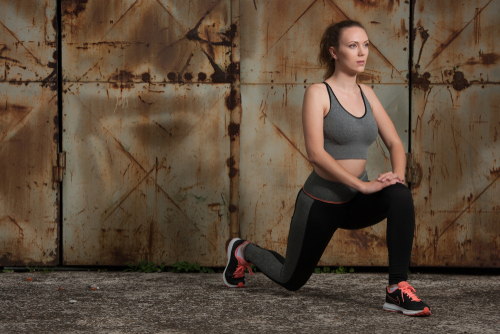It is not always a bad thing to question the treatments that medical professionals prescribe for you. Doing so shows that you are engaged in your treatment. Also, asking questions is an excellent way to learn more about the methods being used to treat you. Asking yourself, “Why is my physical therapist having me do the kneeling hip flexor stretch?”? Read on to find out some possible answers that physical therapists often give for this question.
Three reasons your physical therapist is having you do the kneeling hip flexor stretch:
- You have a hip flexor injury — The most likely answer to your question is that you have a hip flexor injury, such as a strain. Your hip flexors are a group of muscles that are found at the front of your hips. Their job is to help move your thigh and knee closer to your body. These muscles can be injured anytime you change direction suddenly or if your hip flexors are weak or tight. Physical therapists often prescribe the kneeling hip flexor stretch to help keep the injured hip flexor supple and help keep it free of scar tissue.
- You sit a lot — Medical studies show that Americans are sitting down for a significant portion of their day. One study found that nearly 26% of adults sit for more than eight hours per day. Sitting for prolonged periods can lead to many issues, including tight hip flexors. If you sit for long periods, your physical therapists may ask you to try the kneeling hip flexor stretch to improve your flexibility.
- You have certain types of pain — Tight hip flexor muscles can be a root or contributing cause to many types of pain. Some of these include:
- Lower back pain.
- Thigh pain.
- Hip pain.
- Buttock pain.
- Knee pain.
Doing certain therapeutic stretching exercises can help ease these types of pain.
How can I perform the kneeling hip flexor stretch?
Your physical therapist can show you how to perform this stretch properly. The procedure for this stretch often involves:
- Kneeling down on your right knee with your left leg bent so that your foot is flat on the floor.
- Engaging your core muscles to help keep your torso upright.
- Slowly leaning forward until you feel a stretch where your right hip and thigh join.
- Holding this stretch for 20 to 30 seconds.
- Switching legs to stretch your other side.
Find help for your pain that goes beyond stretches at SOL PT
Stretches like the kneeling hip flexor stretch are hardly the only way to treat hip flexor-related pain. At SOL Physical Therapy, our physical therapists can bring many treatment techniques to bear on your pain. The personalized therapy plan we build for you may include:
- Active Release Techniques®
- Graston Technique®
- Posture improvement recommendations.
- Functional rehabilitation.
- Virtual physical therapy.
Contact our team today for more information about how we can help with your pain or to schedule your initial appointment with us.


